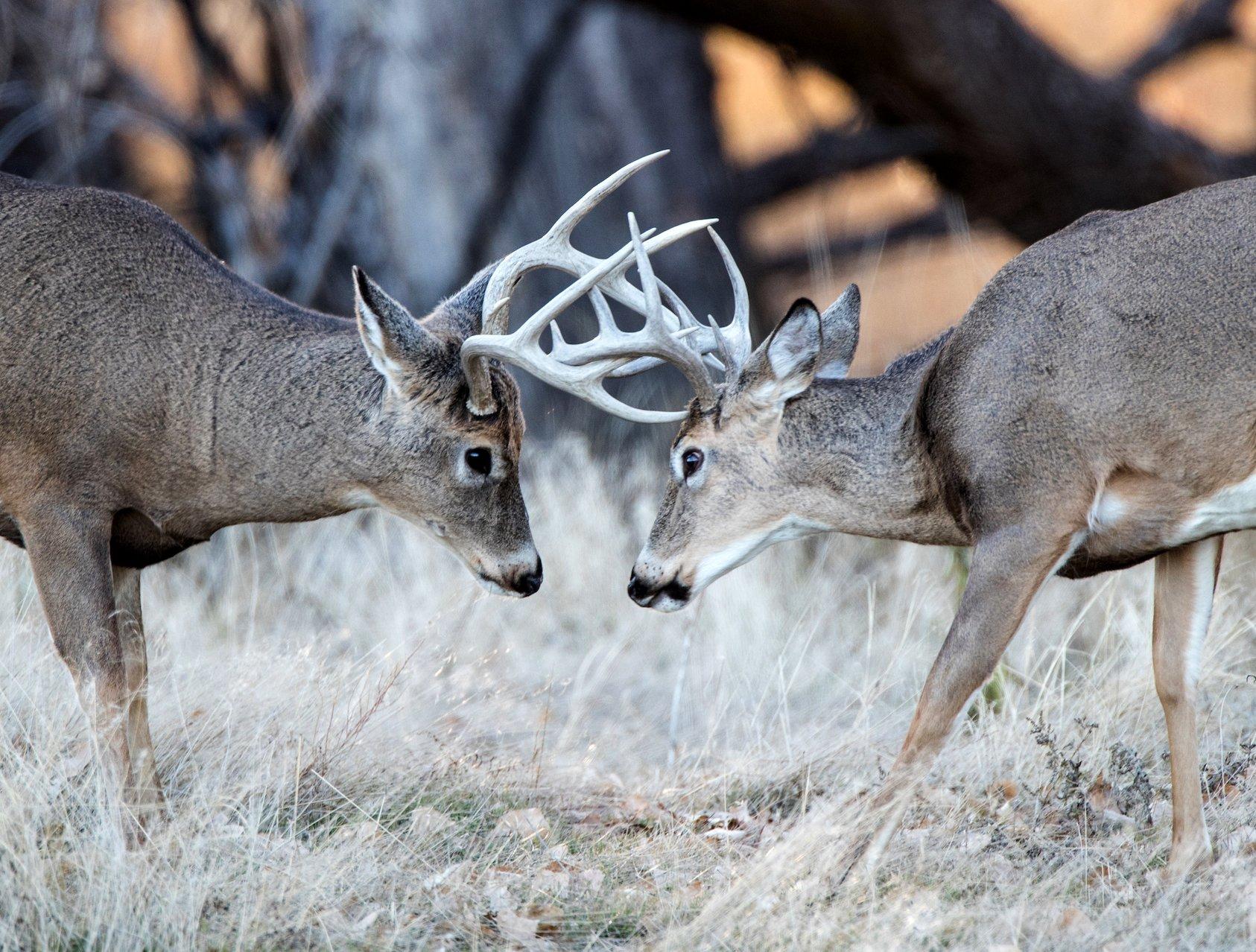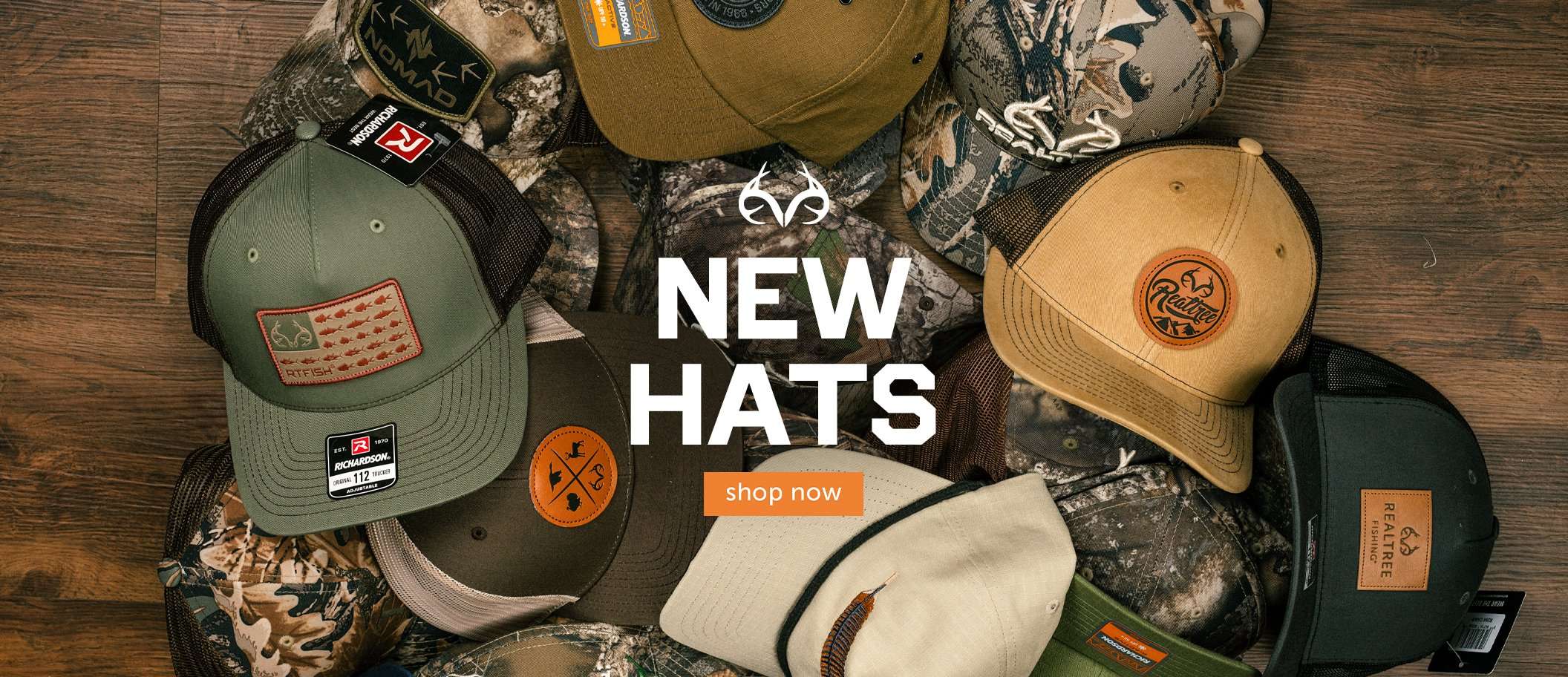Eight major factors influence the way bucks brawl and ultimately, which will win the match

Most buck fights are settled before they become true, bloody brawls. Image by Russell Graves
Getting to watch two whitetail bucks fight is rare, but many deer hunters do get to see it at some point. Several factors determine which buck will be victorious in the fight. According to Brian Murphy, former CEO of the Quality Deer Management Association (now the National Deer Association) and a wildlife biologist, these factors in particular influence the intensity and outcome of a buck fight.
Acquaintance
Age
Attitude
Body weight
Current health (disease, injuries)
Size and shape of antlers
Technique
Testosterone levels
Acquaintance
Most fights are settled before they start. “Yes, true dominance fights are rare — and should be, because they can cause significant injury or death,” Murphy said. “The hierarchy is commonly established through formation of bachelor groups, during which bucks assess who’s in charge.” That continues during the fall breeding season with early season sparring and posturing.
“True knock-down, drag-outs occur with bucks from separate but overlapping home ranges that don’t know each other well, but each think they are the big dog,” Murphy said. “Context and situation also come into play. It’s the right bucks at the right time, often in the presence of other deer — notably receptive does.”
Age
Often, a buck hits its physical prime at 5-½ to 8-½. In areas where bucks don’t get that old, 3-½- and 4-½-year-old bucks rule the roost. Deer that reach older age classes can dedicate more resources to antler growth and weight gain. Younger deer are still dedicating nutrients to skeletal and muscular development. That offers a greater advantage to older bucks. Further, older deer have been around the rut several times and understand the ins and outs of playing the long game.
Attitude
Attitude and personality are important in whitetail fights. Every deer is wired with various tendencies, ultimately creating unique personalities. Some are more passive, and others are more aggressive.
“Attitude is a close second [to body weight],” Murphy said. “I had a buck at UGA that was lucky to weigh 185 [pounds] at 4-½ but had real moxy. He whipped a larger-antlered 6-½-year-old buck that weighed close to 240 like a puny schoolboy (and remained dominant over that buck until its death).”
Body Weight
As mentioned, body weight matters (which correlates with age). Still, some deer are just genetically bigger than others. They might be taller, longer, or heavier. Those factors can offer significant advantages, especially in certain situations. And body size is incredibly important in buck fights.
“It’s probably the largest determining factor, as buck fights are more similar to sumo wrestling matches than boxing matches,” Murphy said.
Current Health
Deer live hard lives, and good health isn’t a guarantee. These animals face several threats, and some harm their health. Parasites, disease, and injuries can diminish a buck’s fighting vigor. Healthier bucks have advantages, which affects fight outcomes.
Size and Shape of Antlers
Antlers comprise the business ends of a buck fight. Obviously, antler size and shape can influence the outcome. But how important are antlers in fighting?
“Considered secondary sexual characteristics, they are more used in display,” Murphy said. “However, size and shape are important. Size matters to a point, but shape can be a huge advantage or disadvantage. Wide-open racks lead to head injuries. Tight racks provide more defense. Dagger points (one spike antler, for example) can be devastating to opponents.”
Technique
The manner in which a buck fights is another factor. As with any form of fighting, certain techniques are more effective than others. When studying buck fights on film or in person, certain moves seem to have great effect. For example, bucks often attempt to twist their opponent’s neck, and when that’s achieved, they pour the force to them, effectively driving them into the ground.
Testosterone Levels
Finally, hormones play significant roles. Testosterone levels can affect how aggressive or passive a deer might be in a situation. Although less important that other points, this element can be so potent that it lets a smaller, younger buck send a bigger, older deer packing.
Regardless of how whitetail bucks fight, and the factors that follow, the battles are something to see. They’re rare in the wild, but they happen. When you get to see one, soak it in and enjoy the moment. It won’t last long.
Don’t Miss: SUPER 6-POINT BUCKS YOU MUST SEE TO BELIEVE












